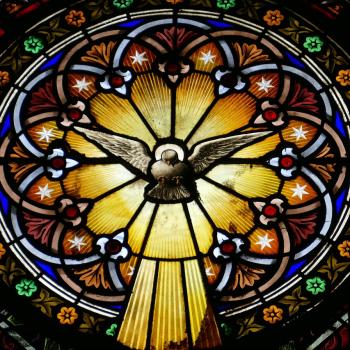John’s description of the harlot city (Revelation 17:4-5) that he sees in the wilderness is written in four clauses: She is clothed; she is gilded; she holds something in her hand; and she has a name on her forehead.
These four clauses describe seven pieces of the harlot’s attire and equipment: She is clothed in (1) purple and (2) scarlet. She is gilded with (3) gold, (4) precious stone and (5) pearls. She has (6) a gold cup in her hand. And on her forehead is written (7) a name. The description plays on patterns of four and seven, the four of spatial extension and the seven of time.
In some respects, the description resembles the description of Jesus in Revelation 1. There too John sees a figure girded, adorned with gold. There too John employs a quasi-blazon style, describing Jesus from head to foot and back. That description too plays on the number seven: There are seven phrases describing Jesus. The harlot is a priestess, the inversion of the son of man who is the true priest.
When we compare the two descriptions, though, we are struck with a massive contrast. After describing Jesus’ position among the lampstands and his robe, John begins to describe Jesus Himself: His head and hair, his eyes like fire, His feet and hand and face. We never see the harlot herself in any detail. The only parts of her body that come into focus are her hand and her forehead, but in both cases John is not describing her body as such but the cup in her hand and the writing on her forehead. Her flesh is mentioned later (17:16), but only because the beast’s horns are devouring her.
One could paint a (bizarre!) picture of Jesus from the description in Revelation 1; to paint the harlot, you have to fill in most of the details. There appears to be no one there, no person inside the purple, gilded, bejeweled robe. Robed in glory, Jesus is the glory of His Father. The harlot priestess disappears so that she is nothing more than her vestments.














